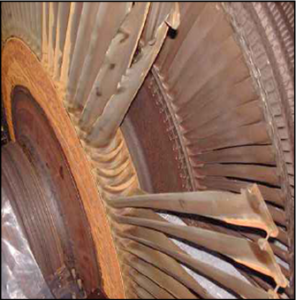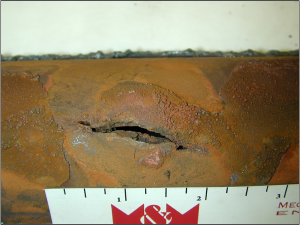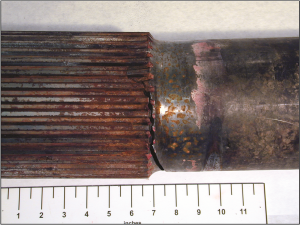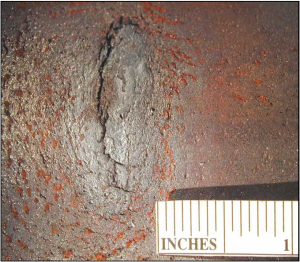
-
Minimize Outages Caused by Equipment Failures
-
Correct Characterization of Equipment Failures
-
Discover the Root Cause and Determine the Best Solution
Every industry strives to minimize both the frequency and the duration of outages caused by equipment failures. When a breakdown occurs, the actual cause of the failure may not be apparent or may be different than what seems likely. A correct diagnosis is necessary to determine how the needed repair should be undertaken or whether replacement or redesign is advisable.
Correct characterization of the problem can lead to enhanced machine life. Invariably, equipment failures raise fundamental questions:
- Would investment in a higher grade component pay off?
- Should the part be redesigned or simply replaced?
- Is a cost-effective repair available?
- Should a repair be considered good-as-new or only a temporary solution?
- Would a new material last longer?
Each choice carries risks associated with how correctly and completely the original problem is understood. Careful, accurate assessments of these failures are necessary before critical decisions can be made.
Acuren has conducted well over 5,000 failure investigations and our wealth of experience is available to assist you in making informed decisions. Our engineers, scientists and technicians, backed by a well-equipped laboratory, can determine the root cause of the trouble and help recommend the best solution.
Acuren can identify the critical elements of the failure quickly, accurately, and efficiently. Our goal is to get your equipment back into safe operation as soon as possible without introducing new, unexpected risks that come from hasty, unsupported conclusions.
We are experienced with numerous process and manufacturing environments, and have a broad understanding of the operational implications of our recommendations.
 What’s Involved?
What’s Involved?
A failure analysis can have three broad objectives—determining mode, cause, or root cause. Failure mode may be determined on-site or in the laboratory, using methods such as fractography, metallography, and mechanical testing. Some common failure modes are fatigue, tensile overload, and stress rupture.
Failure cause is determined from laboratory studies and knowledge of the component, its loading, and its environment. Comparative sampling or duplication of the failure mode in the laboratory may be necessary to determine the cause.
Root failure cause is determined using knowledge of the mode, the cause, and the particular process or system. Determining the root failure cause may require complete information about the equipment’s design, operation, maintenance, history, and environment.
 Conducting an Analysis
Conducting an Analysis
Acuren performs failure analyses in the field, the laboratory, or both. On-site analysis may involve photography, wreckage position documentation, preservation and identification of pieces, eyewitness interviews, record and blueprint review, in-place metallography and replication, hardness testing, and sampling. In-place metallography permits on-site assessment of the damage without destructive sampling.
Metallography is particularly powerful when combined with typical non-destructive examination (NDE) methods such as ultrasonic testing, eddy current, magnetic particle testing, or liquid penetrant testing.
A typical failure analysis might include fractography, metallography, and chemical analysis. The failed component is examined and its condition documented. If appropriate, scale or deposits are collected and any fracture surface features are documented. A scanning electron microscope (SEM) is often used to evaluate fracture surfaces for material defects, determine fracture modes, and measure fracture features and particles precisely.
Our engineers also use energy dispersive X-ray spectroscopy (EDS) to identify elemental constituents in contaminants, corrosion products, and complex microstructures.
A metallographic evaluation of the failed part can identify thermal-, mechanical-, and corrosion-related deterioration. This evaluation will also show whether deterioration was general or localized.
 Expert Assessments
Expert Assessments
Acuren can expertly assess what a thorough analysis will require, then participate as either a principal investigator or as part of an investigative team.
Our engineers are familiar with the equipment and processes used in utility plants, refineries, pulp and paper mills, chemical plants and many other industrial facilities. By systematically identifying, defining, and understanding a failure, we can provide improved equipment reliability and safety for your facility. Acuren offers:
- Responsiveness—we’re always on call and can be at your site in less than 24 hours.
- We have extensive experience in many diverse disciplines.
Independent Third-Party Laboratory Services
As an independent third party laboratory, Acuren – Austin has performed over 5,000 formal multi-party investigations, accident investigations, and failure analyses since 1977. We provide litigation support to insurance and legal industries by way of documentation reviews, material evaluations, laboratory testing, technical reporting, and expert witness testimonies.
More information about these services is available on our Independent Third-Party Laboratory Services page.
For a Print Friendly brochure, click the link below.
Failure Analysis Services Brochure
Failure Analysis Services Brochure (Spanish)

